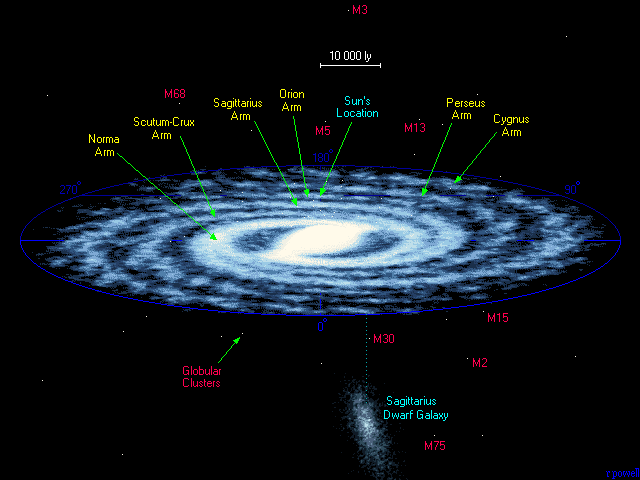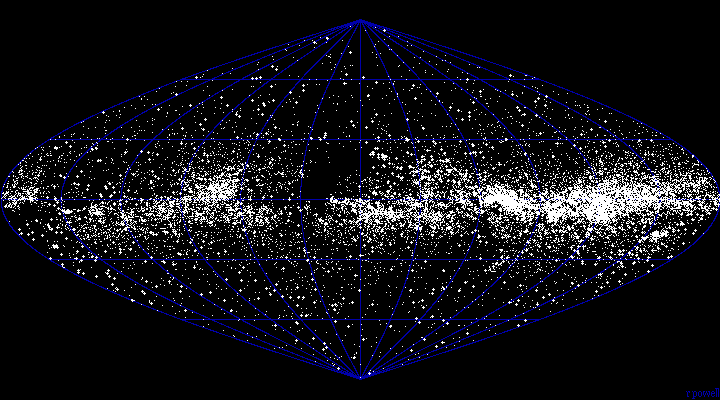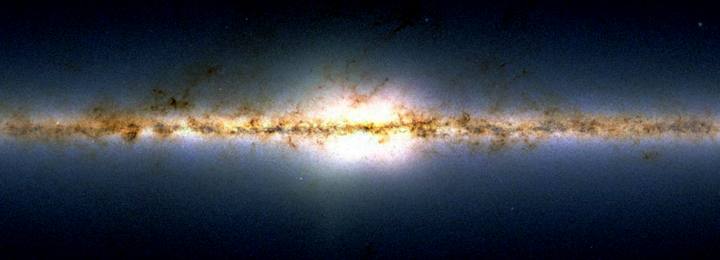
| ||
|
|
|
|
This dwarf galaxy is the nearest galaxy to our own. However, it was only discovered as recently as 1994. It lies on the far side of the galaxy from us and is heavily obscured by the intervening gas, dust and stars. It is approximately 78000 light years away and about 10000 light years in diameter. It is orbiting our galaxy in a period of about 1 billion years but it cannot be expected to last much longer, in a few hundred million years it will be ripped apart by our own galaxy. It contains about one hundred million stars. It also lies in roughly the same position as the globular cluster M54 but whether this globular cluster is actually part of the dwarf galaxy is unclear.
The Sagittarius Dwarf Galaxy will probably not be the first galaxy that has been 'eaten' by our galaxy. The Sloan Digital Sky Survey for instance report that outside of the Galaxy there are huge clumps of stars that appear to be the remains of smaller galaxies that were ripped apart by the Milky Way more than a billion years ago. The distribution of these stars shows at least two clumps that are several thousand light years in size and more than 100 000 light years from the center of the Galaxy.

Above - An all-sky plot of the 25000 brightest, whitest stars (B-V<0) shows how these stars are concentrated along the Milky Way. This map shows our limited, inside view of the Galaxy. The large, dark patch near the middle of the picture is due to nearby dark nebulae in the constellations of Aquila and Ophiuchus.
Below - An infra-red view towards the centre of our Galaxy from the Two-Micron All Sky Survey. Our view of the Milky Way is much better in infra-red light. Visible in this image are the huge clouds of dust which block our view of the Galaxy in visible light. The Sagittarius Dwarf galaxy is also very dimly visible in this picture extending downwards from the left side of the bulge.
